Every day it seems there’s a new app on the market that promises to boost work and/or life productivity. While having so many options at your fingertips might initially seem like a good thing, the irony is that the process of vetting all these productivity apps can cause your own productivity to take a nosedive.
To save you some time, we’ve put together a list of the productivity tools that we believe should be in every CRE professional’s toolkit:
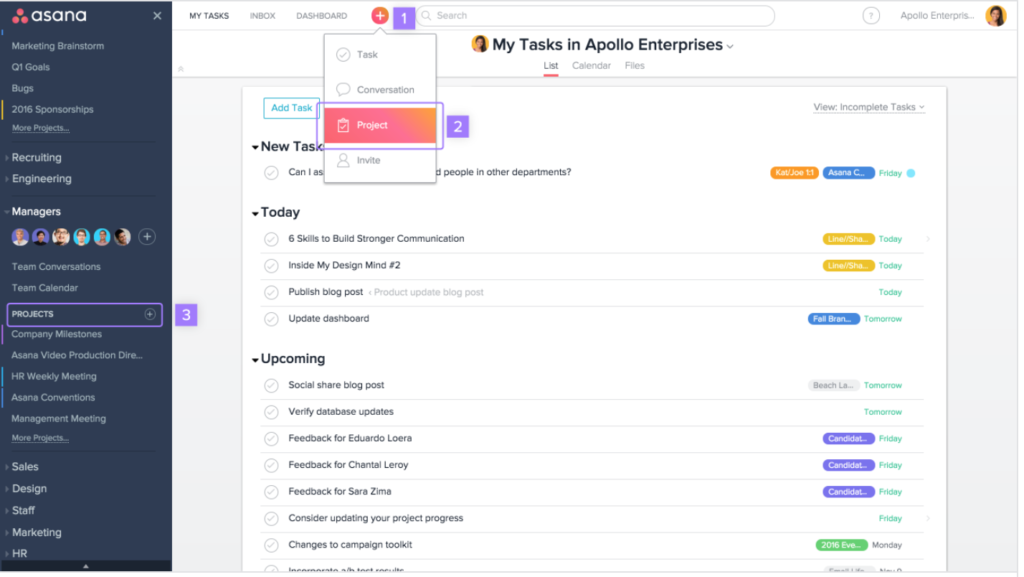
When it comes to project management, keeping track of the many moving parts is always a challenge. Asana is a planning and project management tool that can tame even the most unruly projects by monitoring every deadline, assignment, tasks and subtasks, dependencies, and so forth. It’s a to-do list, a calendar, a reminder app, and a notes app all wrapped up in one.
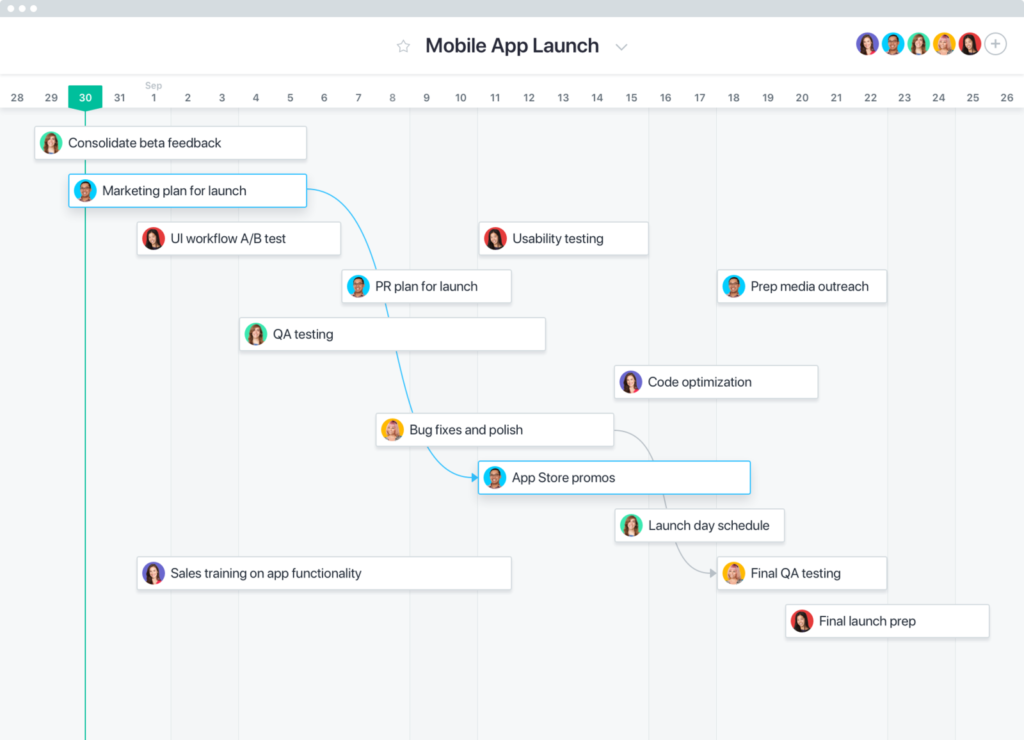
Key features include:
Assigning Responsibilities
As you create lists, Asana lets you assign each task to a member of your team. This ensures accountability and avoiding the classic “I thought he was supposed to do it”.
The Gantt Chart
Asana recently added a “timeline” feature to their system (basically a Gantt chart). It’s a lifesaver. This feature lets you view every aspect of your project on an interactive calendar. The user sees the path to attaining a goal as a series of interconnected tasks along with their deadlines, responsibilities, and dependencies. Not to mention, as you edit the timeline, tasks, and dates update across the app accordingly.
Honorable mentions: Trello, Airtable, Basecamp

You may have heard of Slack, you may already be on it. If so, you probably understand why it is the best communication “de-clutterer”. Here at Leasepilot, we use Slack as an alternative to email – it allows for easy company-wide communication, simple document sharing, and accessible updates from social media or incoming leads. Slack is THE communication system for the business world, their motto “where work happens” is right on target.
How Slack does it all:
Compartmentalize to organize
Slack allows you to create communication “channels”, different chats that are each relevant to a different topic or team. By compartmentalizing conversations, you can end your days of searching through group messages or email threads.
Updates always!
Slack integrates with all your favorite tools. It can notify you about changes in google drive, a new lead on HubSpot, updates on Salesforce, and much more.
Honorable mentions: Skype for business, Discord, Stride
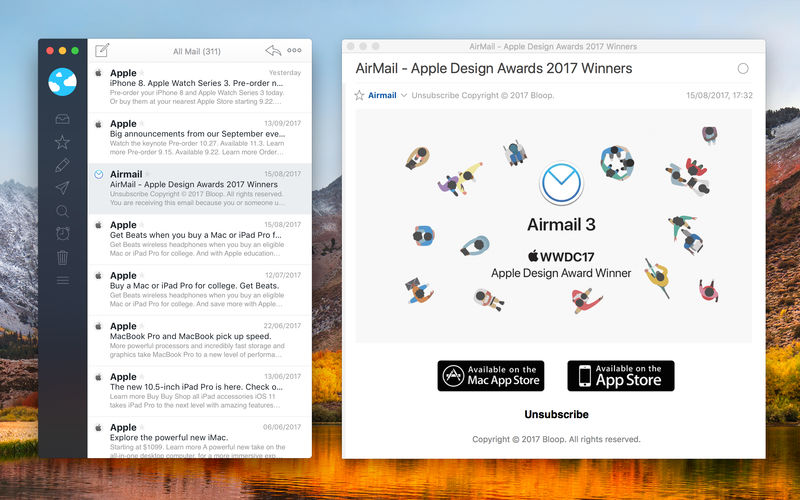
Though we would love to use Slack for all our communication – email isn’t going anywhere. With that in mind, Airmail is a great option for simplifying and organizing your inbox. This client provides a ton of life-hacking features such as the “send later” option or customizable folders like “to do,” “done” or “memos.” To put it bluntly, Outlook and Apple Mail look like a cluttered file cabinet next to Airmail – so save yourself from headaches and try it out!
How Airmail organizes the inbox:
The Snooze Feature
Using the “snooze feature” you can delay the receival of an email until the proper time. Say you get an email about tickets to a show, but don’t go on sale until next month. Airmail lets you snooze the email so that it arrives back in your Inbox on the sale date.
Smarter Notifications
We all know that email notifications are as annoying as the clutter in your inbox. Through customizable notifications, Airmail make sure you are only updated when the important messages come in.
Honorable mentions: Google Inbox, Boomerang
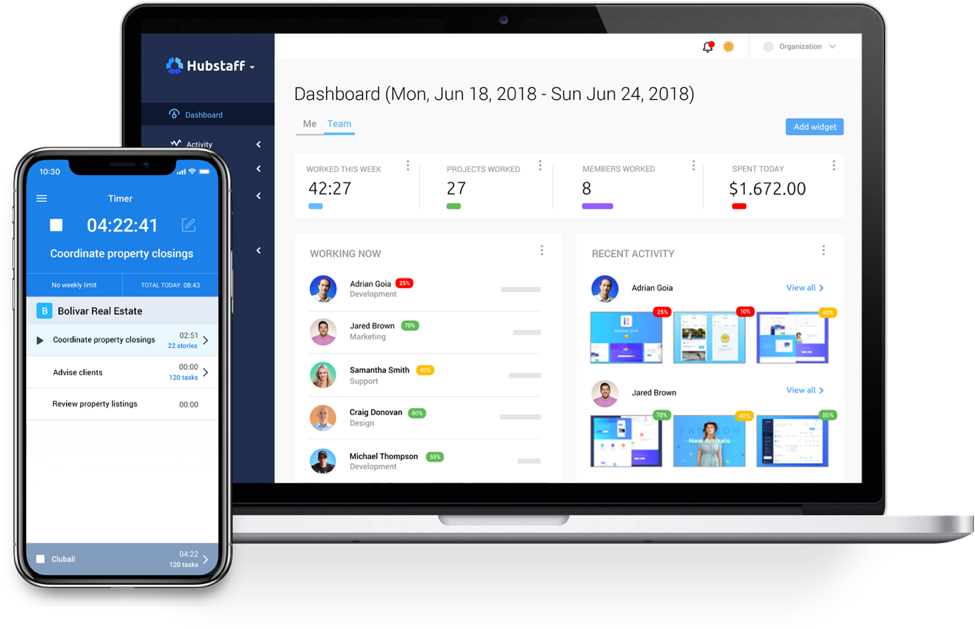
Hubstaff is a time tracking tool that accurately tracks the time you spend on different projects and clients. It removes several admin tasks from your plate so you can focus on finishing work instead of tracking it. Hubstaff has a simple interface that lets you easily switch between your tasks, so no second of work is unaccounted for.
How Hubstaff helps you save time:
No more manual timesheets
Hubstaff automatically generates online timesheets from the time that you track. This means that you won’t need to worry about inaccurate entries on your timesheet or completely forgetting to log the work you did.
Streamlined payroll
Aside from time tracking and timesheets, Hubstaff is also capable of sending payments automatically to team members. Hubstaff will automatically calculate payment amounts based on their hourly rates and the total time they have worked. You can schedule the app to send on a weekly, bi-monthly, or monthly basis.
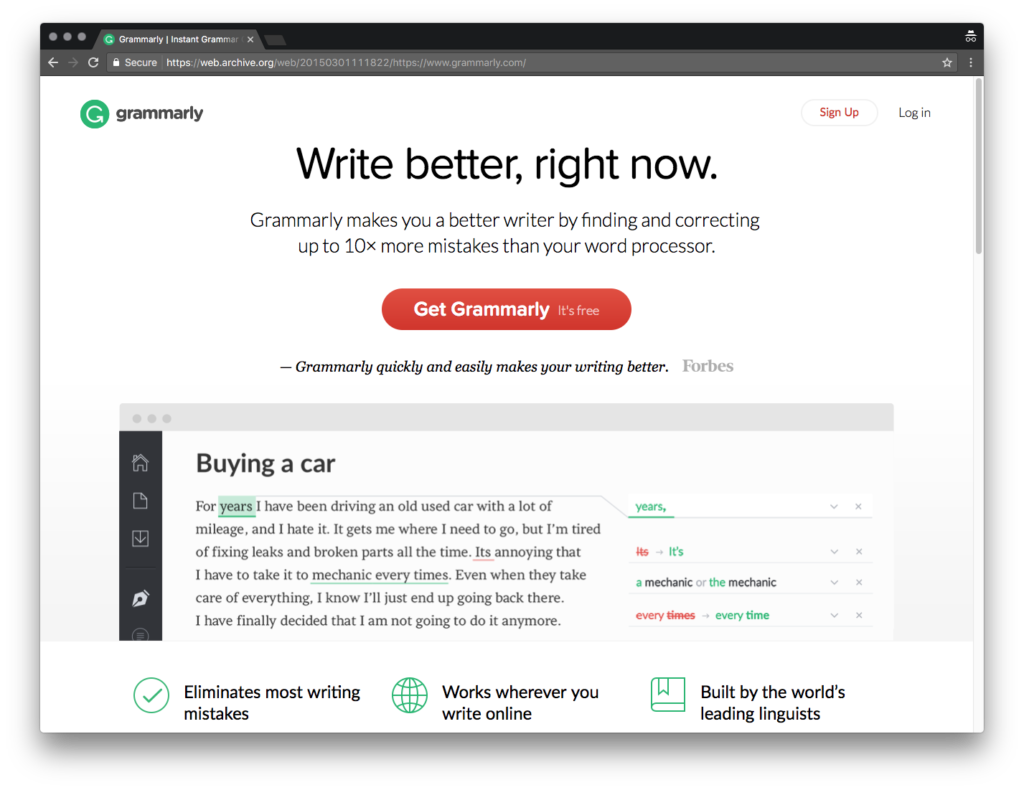
Grammarly is the “spell check” for when you are not using Word. Grammarly helps you fix the grammar, spelling, word usage, even the quality of your adjectives when you are writing on the web. From an email to your boss to blog posts on Facebook, Grammarly gives you polish when it matters most.
Why Grammarly is great:
Have confidence in complexity
Unlike many grammar tools, Grammarly gives you accurate and context-dependent solutions. From repetitive words to comma usage, this tool will give you confidence that the wrong “there/their/they’re” will never
again slip into an email.
Teach a man to fish
Teach a man to fish, and you will feed him for a lifetime. Grammarly wants to help you improve your overall writing ability while correcting it. Grammarly gives you detailed explanations with the solutions to your mistakes and progress reports to help you track your improvements.
Honorable mentions: ProWritingAid and GrammarLookup
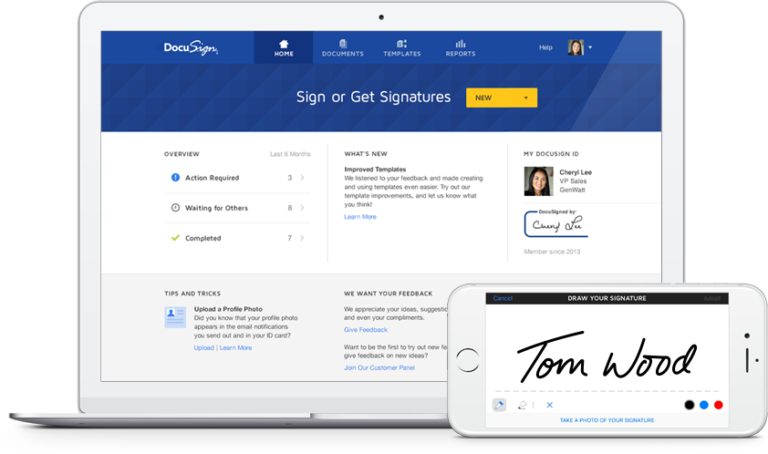
DocuSign is one of those tools that make us exclaim “how did no one think of this sooner?” This product answers the call for a better system than printing a document, sending it, signing it, sending it back (the classic way – with stamps), then scanning it on to a computer and filling it away in that giant cabinet. Instead, as their name implies, DocuSign lets you email the contracts in order to obtain secure electronic signatures and Voilà! Deal closed.
Why we love it:
Signatures everywhere
DocuSign lets you affirm a document from anywhere in the world. Totally legal and totally life-changing. Jim may be in Argentina for a month, but he can still sign that lease!
It’s Green!
By sending your contract electronically, you can avoid printing out that hefty 70-page contract. And if there is a typo? No need to recycle, just email another version.
LeasePilot
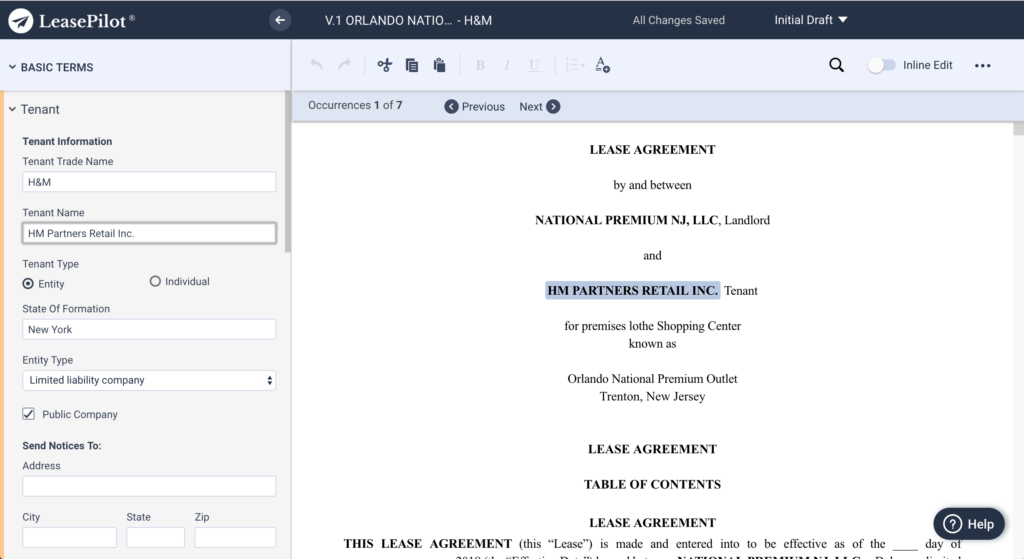
It wouldn’t be a top 6 list without some shameless self-promotion, now would it? Still, when it comes to leasing, we think LeasePilot could save you some serious time and money. LeasePilot uses simple forms and your boilerplate language so that anyone can write a quality lease without a law degree. The business team can use document automation tools to create even the most complex contract, while lawyers can customize through the use of word processing tools.
Why it’s a game changer:
Never not data
By using interconnected forms, every piece of data in a lease is recognized as such, so it doesn’t need to be extracted later. This means LeasePilot can automatically generate abstracts or collect data for ERPs. How simple!
Why are you paying a legal team to spend hours interpreting an LOI for negotiation they weren’t involved in? With LeasePilot business representatives can draft the first versions of the lease themselves, without sacrificing quality.
Easy Updating
Say you update the price of rent on line six, boom! Every calculation or reference to that number updates throughout the document. Consider it the superior alternative to “find and replace” and a calculator.
—
There you have it, our top picks in productivity tools for CRE. Let us know if you think we missed any, and thanks for reading!
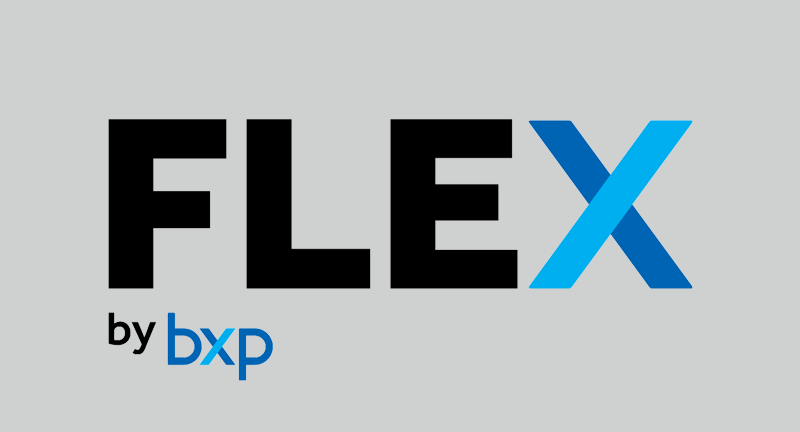

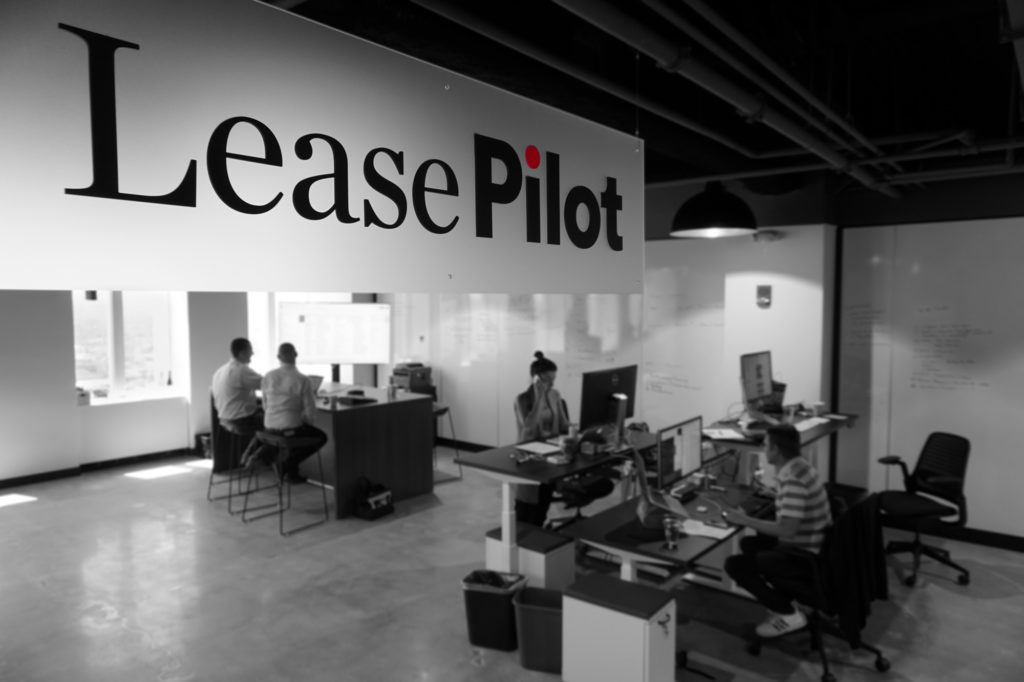

 In the leasing world, tenants typically aren’t faced with the same cost/benefit analysis. It’s relatively common for a tenant’s attorney to mark up a document until their pen runs out of ink. From their perspective, the worst-case scenario is that the landlord’s attorney rejects the edits and both parties continue to negotiate. The hard work of wading through countless proposed modifications to determine what is and is not reasonable falls squarely on the landlord’s legal team.
In the leasing world, tenants typically aren’t faced with the same cost/benefit analysis. It’s relatively common for a tenant’s attorney to mark up a document until their pen runs out of ink. From their perspective, the worst-case scenario is that the landlord’s attorney rejects the edits and both parties continue to negotiate. The hard work of wading through countless proposed modifications to determine what is and is not reasonable falls squarely on the landlord’s legal team. An automated lease-drafting solution like LeasePilot dovetails seamlessly with the adoption of a Call Center Model for negotiation. Leasing reps and other non-lawyers can generate lease drafts using their company’s own boilerplate language in minutes instead of hours.
An automated lease-drafting solution like LeasePilot dovetails seamlessly with the adoption of a Call Center Model for negotiation. Leasing reps and other non-lawyers can generate lease drafts using their company’s own boilerplate language in minutes instead of hours.






